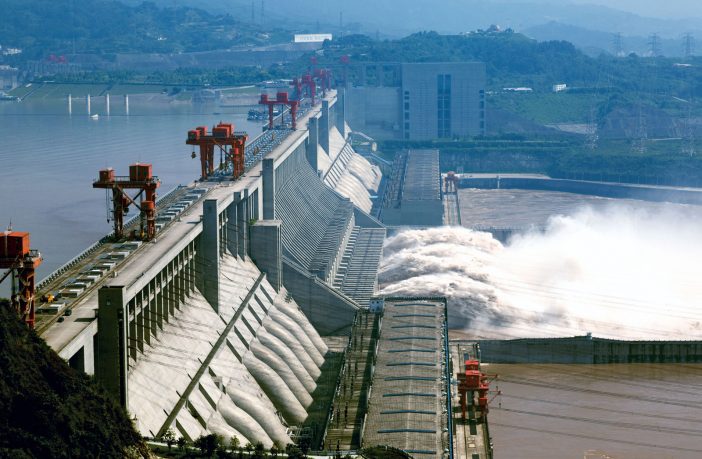- 2021 Hydropower Status Report is published as the world continues to grapple with the Covid-19 pandemic.
- Signs of recovery are emerging but considerable disruption is expected to continue throughout 2021.
Beyond Covid, the challenge of climate change remains the dominant issue for the energy sector. The International Energy Agency (IEA)’s flagship Net Zero by 2050 report, published in May 2021, suggests the world will need 2,600 GW of hydropower capacity by mid-century to have a chance of keeping global temperature rises below 1.5 degrees Celsius. That means that we need to build the same amount of capacity in the next 30 years as in the previous 100.

It is now becoming increasingly clear that the role of renewable hydropower will undergo a qualitative shift over the coming decades. While it will continue to provide low cost, baseload electricity in many markets, hydropower will increasingly be valued for its flexibility and provide essential support to the huge growth in wind and solar that is needed to limit global warming.
Indeed, as recognised by the IEA, hydropower will become the dominant source of flexible electricity by 2050, so it is essential that investment steps up to ensure low carbon energy security over the coming decades.
Events over the past year have demonstrated that electricity systems need flexibility now. In Europe, in January 2021 a blackout event was avoided through the support of highly flexible sources of generation like hydropower, conversely in Texas in February 2021 supply failed in extreme weather and there was not enough flexible generation available to compensate.

This report shows the hydropower sector generated a record 4,370 terawatt hours (TWh) of clean electricity in 2020 – up from the previous record of 4,306 TWh in 2019. To put this into context, this is approximately the same as the entire annual electricity consumption of the United States.
Overall hydropower installed capacity reached 1,330 gigawatts (GW) in 2020. This represents year-on-year growth of 1.6 per cent – higher than 2019 but still well down on the more than 2 per cent needed to enable hydropower’s essential contribution to tackling climate change.
During 2020, hydropower projects totalling 21 GW in capacity were put into operation, up on 2019’s 15.6 GW. Nearly two-thirds of this growth came from China, which saw 13.8 GW of new capacity. Among other countries that added new capacity in 2020, only Turkey (2.5 GW) added more than 1 GW.
Pumped storage hydropower totalled 1.5 GW of the new additions in capacity, up on the 304 MW added in 2019. Most of this was in China (1.2 GW), with Israel also commissioning the 300 MW Mount Gilboa project under an innovative financing model.
Major projects completed in 2020 included the 2.1 GW Lauca facility in Angola, the 1.8 GW Jixi pumped storage facility in China and the Ilisu (1.2 GW) and Lower Kaleköy (0.5 GW) projects in Turkey. The single biggest increase in capacity was in China, where the Wudongde project put eight of its 12 units online, adding 6.8 GW to the Chinese grid. The remainder is expected to be commissioned in 2021.
China remains the world leader in respect of total hydropower installed capacity with over 370 GW. Brazil (109 GW), the USA (102 GW), Canada (82 GW) and India (50 GW) make up the rest of the top five. Japan and Russia are just behind India, followed by Norway (33 GW) and Turkey (31 GW).

Methodology
The data presented in this report were continuously tracked and updated to account for new information in our global hydropower database which tracks more than 13,000 stations in over 150 countries.
Data were compiled by a team of analysts using information sourced from (1) official statistics from governments, regulation agencies, transmission network operators and asset owners; (2) scientific articles and reports; (3) daily news reports involving hydropower plant development, official declarations of contracts, and equipment deals; and (4) direct consultation with operators and industry sources.
When generation data from primary sources are not available, estimates are prepared based on the previous year’s figure, averaged capacity factors and regional meteorological events and data.
For a small number of countries capacity data from previous years has been updated with new information. This means that those countries will see a year on year increase compared to previous years’ reports, but these increased capacity numbers are not treated as capacity added in 2020.
.png)
Hydropower growth in context
The rise of 21 GW in total hydropower installed capacity in 2020 represented an increase of 1.6 per cent on the previous year. By comparison, the average year-on-year growth in installed capacity in the five years between 2016 and 2020 was 1.8 per cent. It is important to note however that annual growth can vary considerably depending on when major projects, which are years in development, are commissioned.
Notwithstanding, the world needs significantly more hydropower, to be built at a much faster rate, if it is to tackle climate change. Multilateral bodies such as the International Energy Agency (IEA) and International Renewable Energy Agency (IRENA) have previously stated that the world needs around an additional 850 GW of new hydropower to keep global warming below 2 degrees Celsius. To reach this target would require yearly growth of around 2 per cent a year on average.
But if we want to limit temperature rises to 1.5 degrees the challenge is greater. The IEA’s Net Zero by 2050 report now estimates some 1,300 GW of new hydropower capacity is needed by 2050. To achieve this more stretching target the yearly growth required increases to at least 2.3 per cent if the world starts building at this rate now.
In addition, the global hydropower fleet is ageing, and although much can be modernised it is inevitable that there will be some retirements, affecting future capacity.

Author: Bryan Groenendaal















